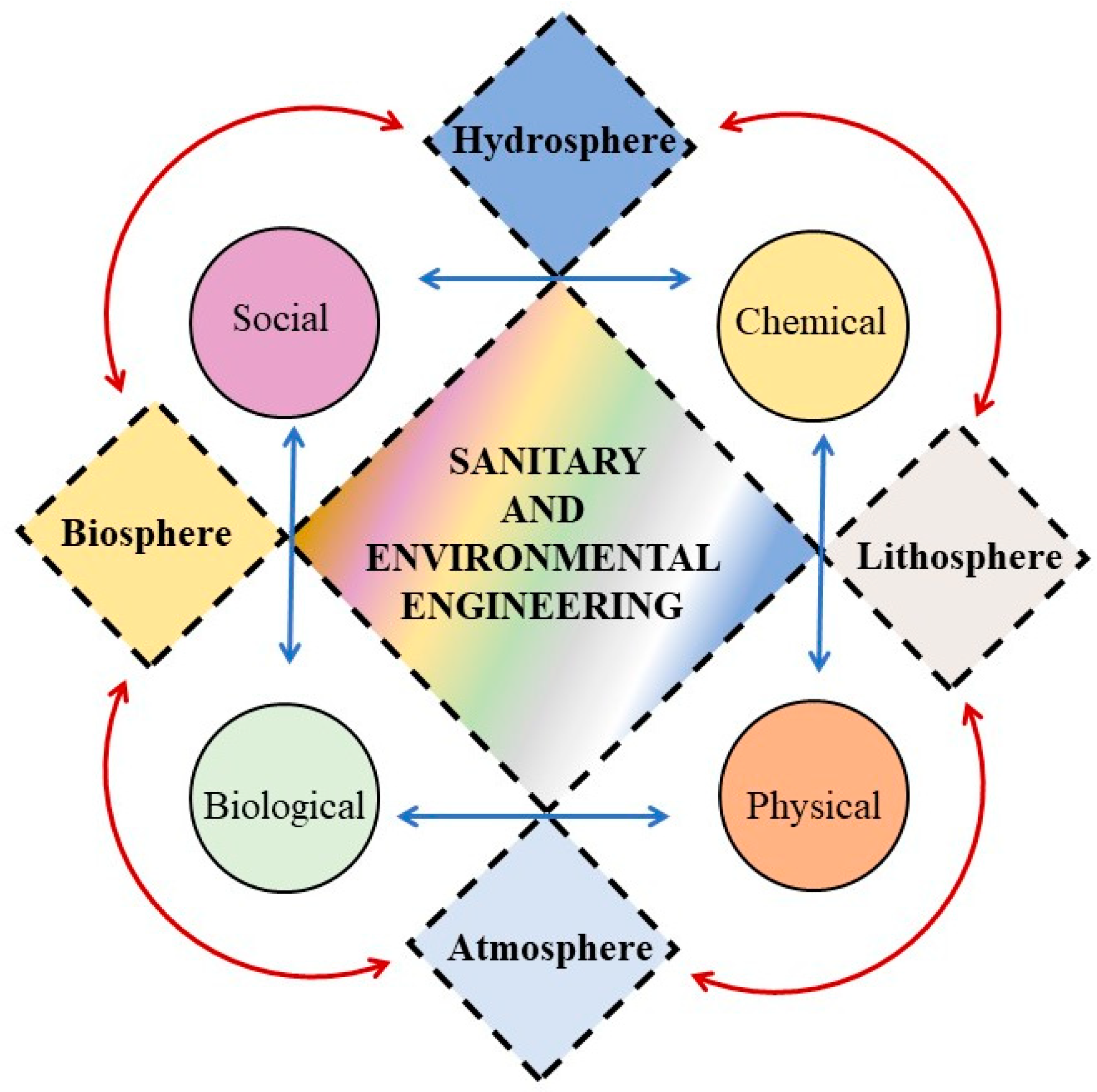Special Issue—“Sanitary and Environmental Engineering: Relevance and Concerns”
Funding
Conflicts of Interest
References
- Prüss-Üstün, A.; Wolf, J.; Corvalán, C.; Bos, R.; Neira, M. Preventing Disease through Healthy Environments: A Global Assessment of the Burden of Disease from Environmental Risks; World Health Organization: Geneva, Switzerland, 2016. [Google Scholar]
- Available online: https://www.worldwildlife.org/pages/living-planet-report-2022 (accessed on 5 March 2023).
- Available online: https://www.un.org/sustainabledevelopment/sustainable-development-goals/ (accessed on 5 March 2023).
- Yang, W.; Shen, P.; Ye, Z.; Zhu, Z.; Xu, C.; Liu, Y.; Mei, L. Adversarial Training Collaborating Multi-Path Context Feature Aggregation Network for Maize Disease Density Prediction. Processes 2023, 11, 1132. [Google Scholar] [CrossRef]
- Jevšnik, M.; Pirc, L.; Ovca, A.; Šantić, M.; Raspor, P.; Torkar, K.G. A Multimethod Study on Kitchen Hygiene, Consumer Knowledge and Food Handling Practices at Home. Processes 2022, 10, 2104. [Google Scholar] [CrossRef]
- Slabe, D.; Šparovec, E.D.; Jevšnik, M. Hygiene and Food Safety Habits among Slovenian Mountaineers. Processes 2022, 10, 1856. [Google Scholar] [CrossRef]
- Galičič, A.; Rožanec, J.; Kukec, A.; Carli, T.; Medved, S.; Eržen, I. Identification of Indoor Air Quality Factors in Slovenian Schools: National Cross-Sectional Study. Processes 2023, 11, 841. [Google Scholar] [CrossRef]
- Galičič, A.; Kranjec, N.; Rožanec, J.; Obid, I.; Grilc, E.; Gabrovec, B.; Fafangel, M. Spread of SARS-CoV-2 Infections in Educational Settings by Level of Education, Taking into Account the Predominant Virus Variant. Processes 2022, 10, 1947. [Google Scholar] [CrossRef]
- Xia, B.; Zheng, L. Ecological Environmental Effects and Their Driving Factors of Land Use/Cover Change: The Case Study of Baiyangdian Basin, China. Processes 2022, 10, 2648. [Google Scholar] [CrossRef]
- Zhang, Y.; Yan, Q. Application of Beetle Colony Optimization Based on Improvement of Rebellious Growth Characteristics in PM2.5 Concentration Prediction. Processes 2022, 10, 2312. [Google Scholar] [CrossRef]
- Wang, Q.; Li, S.; Yang, Y. Simulation Analysis of Implementation Effects of Construction Waste Reduction Policies. Processes 2022, 10, 2279. [Google Scholar] [CrossRef]
- Zekanović, M.S.; Begić, G.; Mežnarić, S.; Jelovica Badovinac, I.; Krištof, R.; Tomić Linšak, D.; Gobin, I. Effect of UV Light and Sodium Hypochlorite on Formation and Destruction of Pseudomonas fluorescens Biofilm In Vitro. Processes 2022, 10, 1901. [Google Scholar] [CrossRef]
- Piletić, K.; Kovač, B.; Planinić, M.; Vasiljev, V.; Karačonji, I.B.; Žigon, J.; Gobin, I.; Oder, M. Combined Biocidal Effect of Gaseous Ozone and Citric Acid on Acinetobacter Baumannii Biofilm Formed on Ceramic Tiles and Polystyrene as a Novel Approach for Infection Prevention and Control. Processes 2022, 10, 1788. [Google Scholar] [CrossRef]
- Fink, R. Terpenoids as Natural Agents against Food-Borne Bacteria—Evaluation of Biofilm Biomass versus Viability Reduction. Processes 2023, 11, 148. [Google Scholar] [CrossRef]

Disclaimer/Publisher’s Note: The statements, opinions and data contained in all publications are solely those of the individual author(s) and contributor(s) and not of MDPI and/or the editor(s). MDPI and/or the editor(s) disclaim responsibility for any injury to people or property resulting from any ideas, methods, instructions or products referred to in the content. |
© 2023 by the author. Licensee MDPI, Basel, Switzerland. This article is an open access article distributed under the terms and conditions of the Creative Commons Attribution (CC BY) license (https://creativecommons.org/licenses/by/4.0/).
Share and Cite
Fink, R. Special Issue—“Sanitary and Environmental Engineering: Relevance and Concerns”. Processes 2023, 11, 1378. https://doi.org/10.3390/pr11051378
Fink R. Special Issue—“Sanitary and Environmental Engineering: Relevance and Concerns”. Processes. 2023; 11(5):1378. https://doi.org/10.3390/pr11051378
Chicago/Turabian StyleFink, Rok. 2023. "Special Issue—“Sanitary and Environmental Engineering: Relevance and Concerns”" Processes 11, no. 5: 1378. https://doi.org/10.3390/pr11051378
APA StyleFink, R. (2023). Special Issue—“Sanitary and Environmental Engineering: Relevance and Concerns”. Processes, 11(5), 1378. https://doi.org/10.3390/pr11051378




